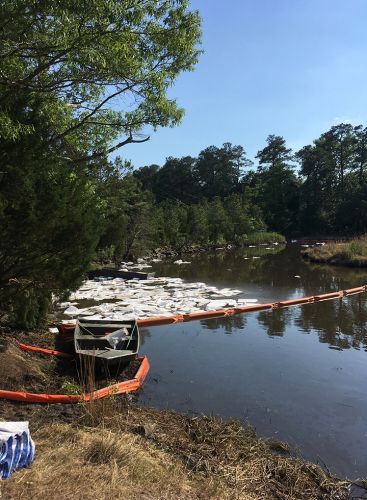Incident Responses for May 2017
June 6, 2017 - Every month our Emergency Response Division provides scientific expertise and services to the U.S. Coast Guard on everything from running oil spill trajectories to model where the spill may spread, to possible effects on wildlife and fisheries, and estimates on how long the oil may stay in the environment.
In May, there were two incidents of dead gray whales in Washington state, one floating offshore near Long Beach, and another washed ashore in Bellingham Bay. In both cases, we were asked for trajectories. In the case of a whale found floating at sea, we use our GNOME trajectory modeling software to map the possible drift route of the carcass.
When a whale washes ashore, one of the things that officials need to know is how far they have to tow the carcass back out to sea to ensure it will not wash back to shore.
Our Incident News website has information on oil spills and other incidents where we provided scientific support.
Here are some of this month’s responses:
In May, there were two incidents of dead gray whales in Washington state, one floating offshore near Long Beach, and another washed ashore in Bellingham Bay. In both cases, we were asked for trajectories. In the case of a whale found floating at sea, we use our GNOME trajectory modeling software to map the possible drift route of the carcass.
When a whale washes ashore, one of the things that officials need to know is how far they have to tow the carcass back out to sea to ensure it will not wash back to shore.
Our Incident News website has information on oil spills and other incidents where we provided scientific support.
Gray Whale Carcass: Seaview Approach, Washington
Mystery Sheen, Keweenaw Waterway, Michigan
Sunken Tug, Eugene Island Block, Offshore, Louisiana
Ethylene Glycol Drums, Sea Rim State Park
Tug Adrift off Washington Coast
PVS Chemicals Sulfuric Acid Release
Crowley Barge DBL 165-1 Grounding
 An official website of the United States government.
An official website of the United States government. 

